
Twelve years. That’s how long it had been since my friend Randy and I fished the San Juan together. He had been there a few years ago and we fished together in Colorado since then, but we were overdue for joint venture. So when he first mentioned reuniting on the San Juan a few months ago, in my mind, I was already packed and ready to go.
The last time we were there, we completely ignored the local advice to fish the time-honored and dreadful San Juan Worm and strike indicator rig and caught plenty of fish on dries while others went empty handed. So, I was confident we would catch fish without having to resort to bobber fishing with the fly fishing equivalent of bait, but secretly, I wondered if I would be pushing the envelope a little too far by fishing tenkara.
On November 28th, I hit the road for an easy drive over the Rockies and through the desert to New Mexico with hopes of big fish, big laughs, tall tales, and more importantly, to catch a San Juan trout on tenkara!
Seven hours later, I arrived in Aztec, NM. A small town without the “small town charm”. Bleak, industrial, utilitarian … but a short drive from the river and we found a hotel that was nicer and cheaper than staying at Abe’s Motel and Fly Shop (which is right on the water). It was just a place to sleep, dry out waders, and compare notes anyway.

Speaking of Abe’s, no SJ trip would be complete without a stop to the iconic and storied fly shop. It’s kind of the Wall Drug of fly fishing. I still have the hat I bought there 12 years ago, thinking I’d by another one this trip (in the hopes of guaranteeing future trips by holding myself to an ongoing tradition) but the only choices they had were purple or chartreuse. Fit for a steelhead or salmon fly maybe, but not for my head. As we all know, fishing hats should be neutral colors like beige or olive or something. So I bought an Abe’s T-shirt instead.
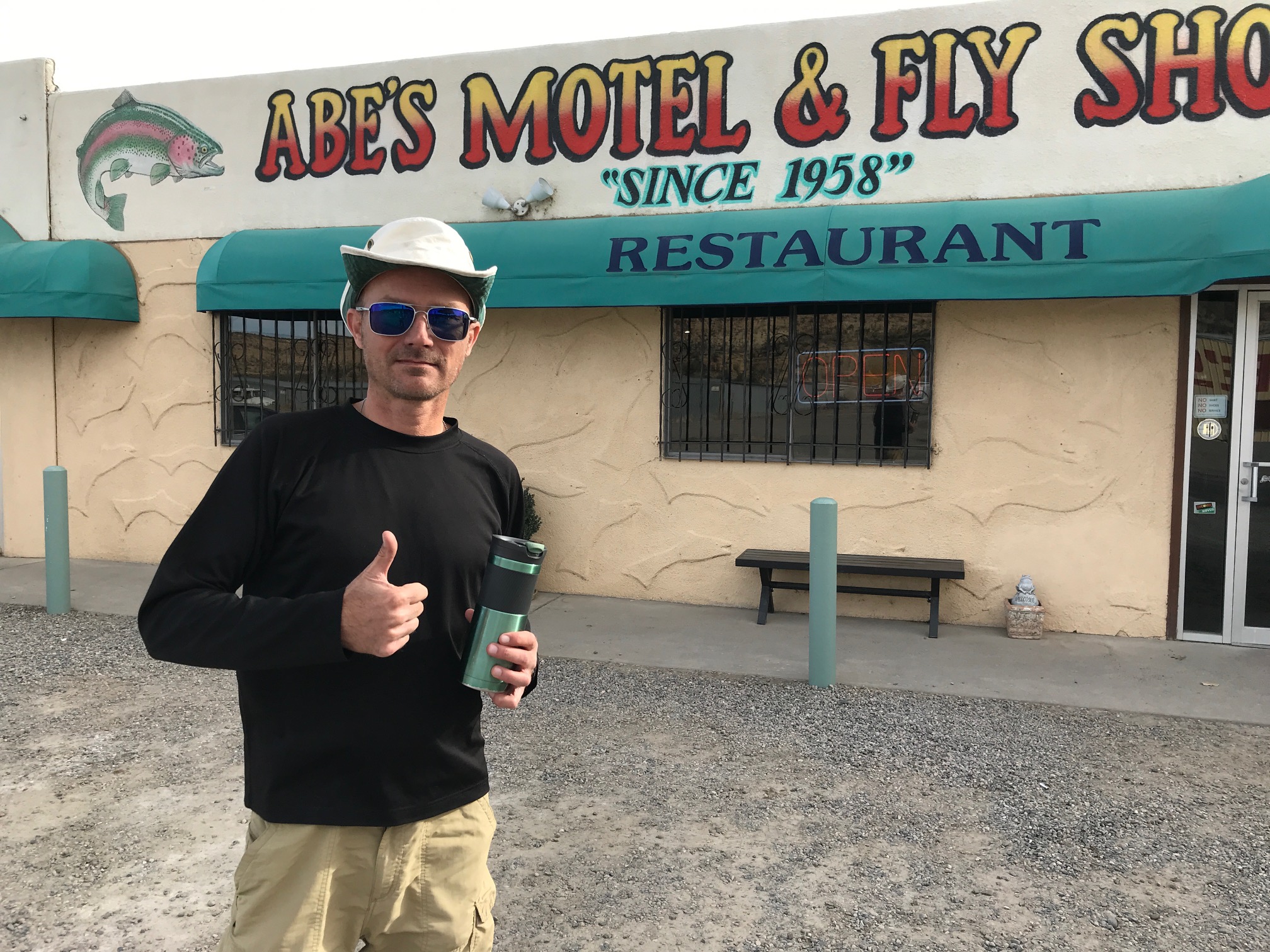
Tackle Used
Rod: Tenkara USA Ito (13′ – 14′ 7″), Tenkara no Oni Type I (309 cm)
Line: Tenkara USA 13′ 3.5 fluorocarbon, orange
Tippet: Rio Powerflex fluorocarbon, 6X, 7X
Spool: Tenkara Path Oak Line Spool
Net: SF Catch and Release Net
Pack: FishPond San Juan Chest Pack, Zimmerbuilt Tenkara Guide Sling
Waders: Orvis Silver Sonic Convertible
Day 1 – Muñoz Flats
I have to admit, my anticipation dissolved into intimidation when I first laid eyes on this spot. The water was not only BIG, but like glass–almost no current to speak of. Even the slightest shuffle of your feet sent ripples clear across to the opposite bank. But, there were fish rising. Tiny sips that could indicate only one thing–midges. Sure enough, a quick inspection of the water’s surface revealed thousands of minuscule black midges–smaller than anything I had in my box. My first few casts were met with refusals, but eventually, I dropped down to a 7X tippet, smaller fly, and started hooking fish.
I say “hooking” because I broke off several on the hookset, and lost several more when the fish shook the hook. I would have had a stellar day if I hadn’t been so conditioned to fishing #12s in high-gradient water by my home waters. I knew I was going to get schooled over the next three days, but I’m a fast learner and I don’t give up. At least I managed to land a few fish as encouragement.
I now know why they call this section the “flats”. It’s highly technical water that requires finesse and patience. And I knew that night, I’d have to rethink my strategy for the next day.
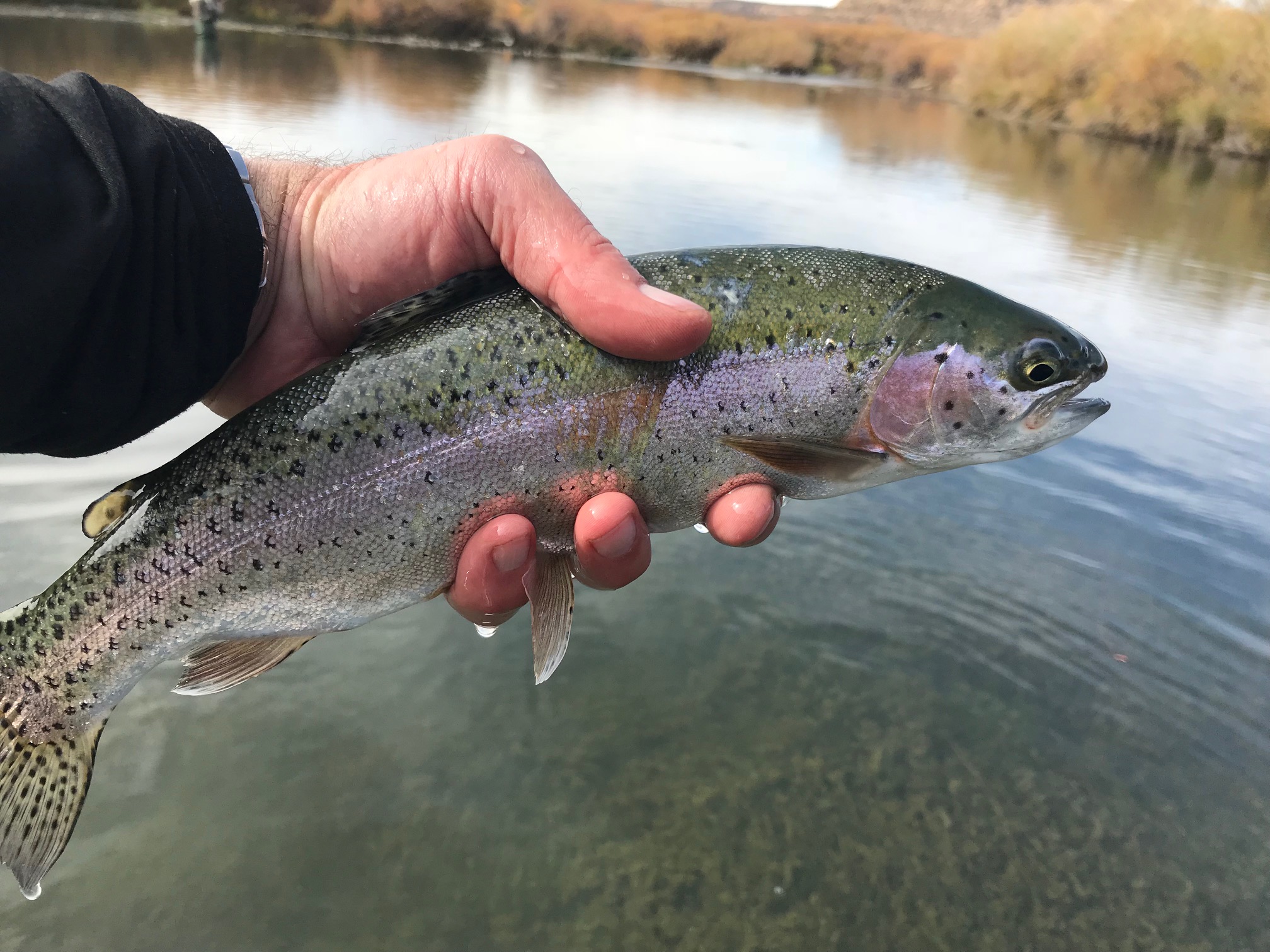 While my mission to catch a fish on a tenkara fly remained, my friend Randy had already accomplished his mission of landing a fish on the bamboo rod our late friend and Western New York fishing legend Bruce Barraclaugh made for him. Well done Randy! A great hommage to the great rogue, ruffian fly fisher himself!
While my mission to catch a fish on a tenkara fly remained, my friend Randy had already accomplished his mission of landing a fish on the bamboo rod our late friend and Western New York fishing legend Bruce Barraclaugh made for him. Well done Randy! A great hommage to the great rogue, ruffian fly fisher himself!
 Tiny black midges were everywhere! They ranged from about #22 to #28 …
Tiny black midges were everywhere! They ranged from about #22 to #28 …
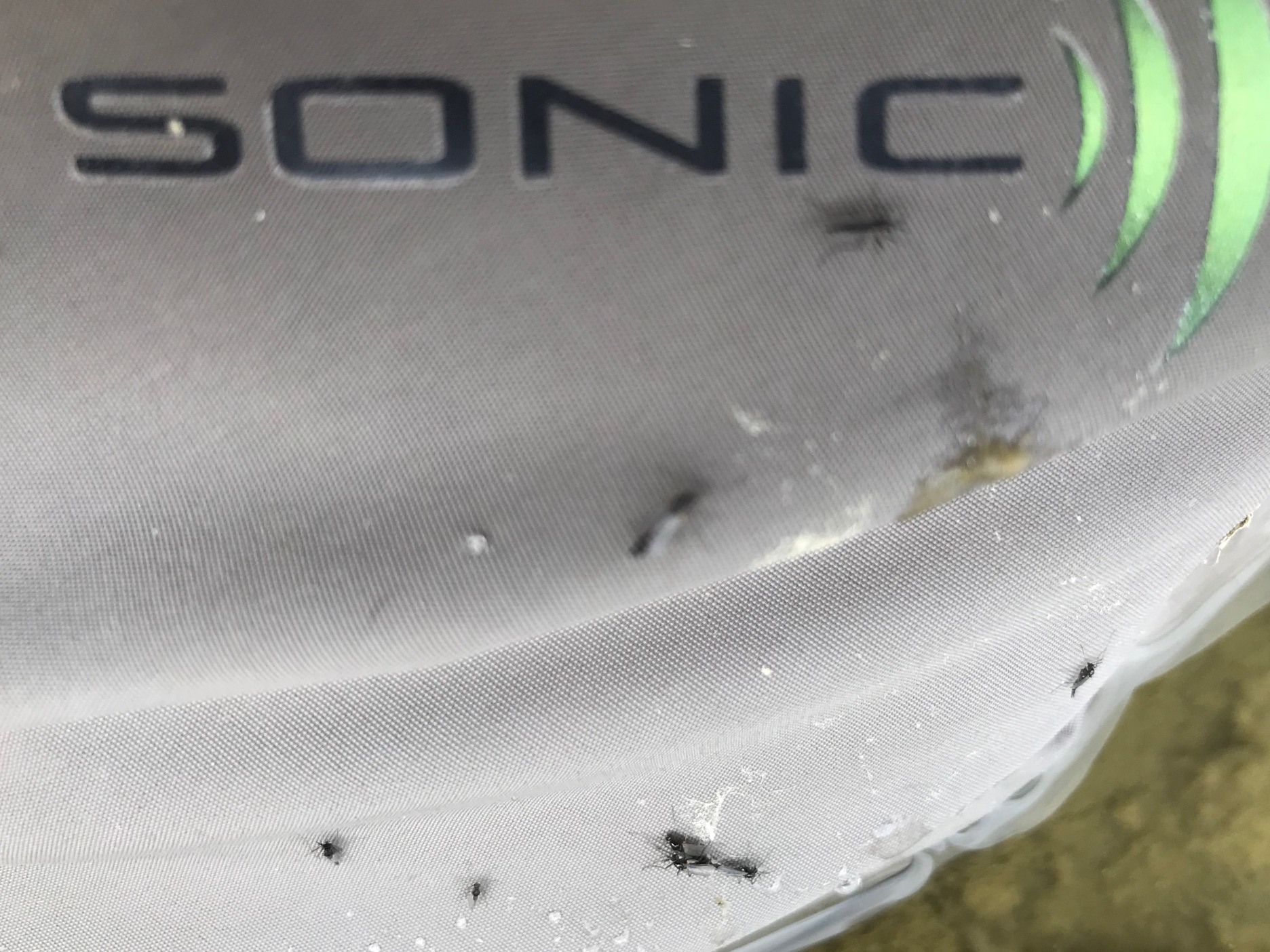
Flies that worked
> KF Midge Emerger, #22 black
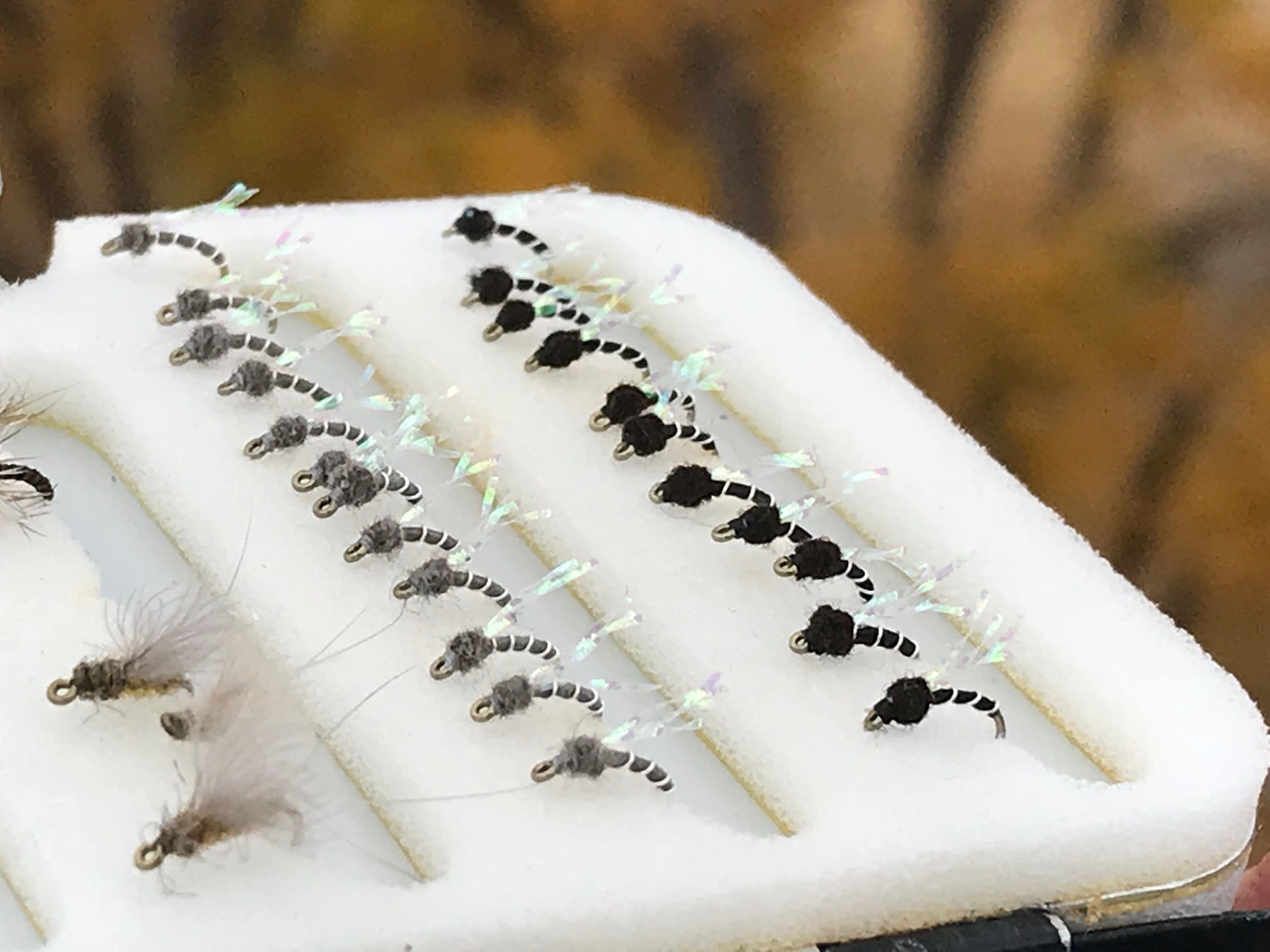 Hook: Tiemco 2487
Hook: Tiemco 2487
Thread: Uni Black 8/0
Body: Thread
Rib: Small Silver Wire
Wing: Pearl Krystal Flash
Head: Black Superfine Dubbing
NOTE: I tie the wing long, and trim it to suit conditions on the stream. I leave it longer for more flash on cloudy days or when the water is turbid and clip it shorter in shallower or clearer water.
> Peacock Midge Pupa, #22
 Hook: Daichi 1180 – Crystal Finish
Hook: Daichi 1180 – Crystal Finish
Thread: Uni Black 8/0
Body: Stripped Peacock Quill
Wing: White Floating Poly Yarn
Thorax: Peacock Herl
> CDC Blue Winged Olive Emerger, #22
 Hook: Tiemco 2487
Hook: Tiemco 2487
Thread: UTC 140, Olive
Tail: Teal Flank or Wood Duck
Body: Thread
Wing: Med Dun CDC
Head: Olive Superfine Dubbing
Flies that didn’t work
- Griffith’s Gnat, #22
- Olive RS2, #22
- Black Palomino Midge, #22
- Takayama Sakasa Kebari, #12
- Utah Killer Bug, #12
Day 2 – Crusher Hole (Navajo Lake Day Use Area)
The second day was nothing short of amazing! All in all, I landed 30+ fish. I still lost a lot, but I was getting better at setting the hook and bringing them to the net without breaking them off. The night before, I had broken the tip of my Oni rod while removing the line, so I switched to my Tenkara USA Ito. While the Oni performed perfectly and I prefer its action, the Ito serendipitously proved to be a better choice for this river The added length from the zoom came in handy more than once to get a better drift and the softer action definitely gave me more tippet protection.
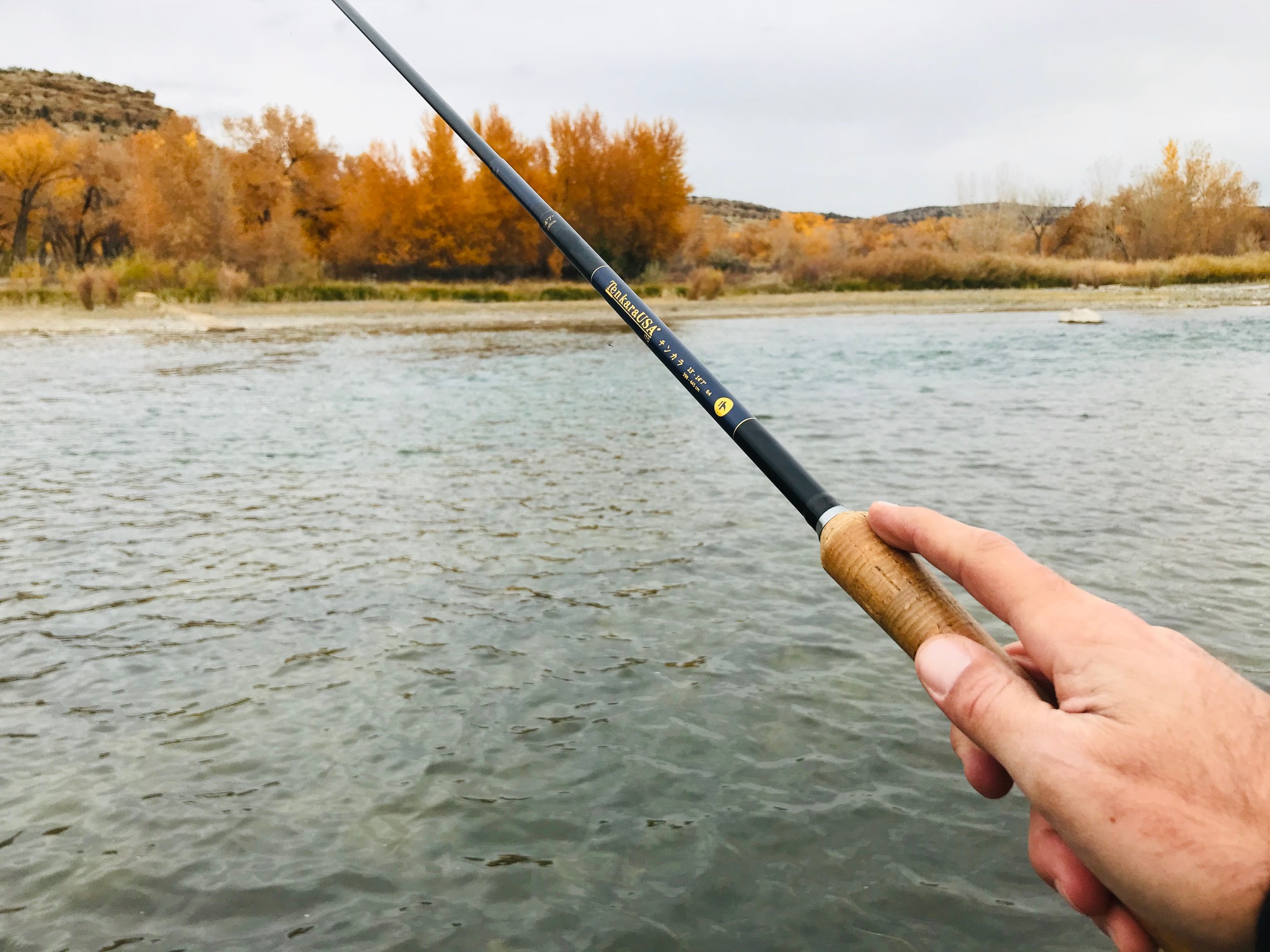 Whereas the day before was all about midges, this day was all about olives. There was a prolific hatch in the afternoon and fish rising everywhere. Plus, the water in this section is more broken which obscures the fly to your advantage and allows you to fish a heavier (6X) tippet. There’s a big difference between 7X and 6X when you have to hand line your fish in with tenkara, so that unquestionably helped my land rate.
Whereas the day before was all about midges, this day was all about olives. There was a prolific hatch in the afternoon and fish rising everywhere. Plus, the water in this section is more broken which obscures the fly to your advantage and allows you to fish a heavier (6X) tippet. There’s a big difference between 7X and 6X when you have to hand line your fish in with tenkara, so that unquestionably helped my land rate.
Also, back at the hotel the night before, I re-strategized my gear selection, parsed my patterns, and switched to my chest pack, which made it easier and faster to switch flies, adjust tippet, and add floatant to meet the technical challenges more efficiently. And it paid off.
I stopped taking pictures of fish after a while (they all start to look the same), but here are just a few …
This one looked like he had been harpooned by a heron …
Speaking of the devil …
Flies that worked
> CDC Blue-Winged Olive Emerger #22 (See above)
> Blue-Winged Olive Thorax Dun #20
Look how chewed up this one got and it kept working!
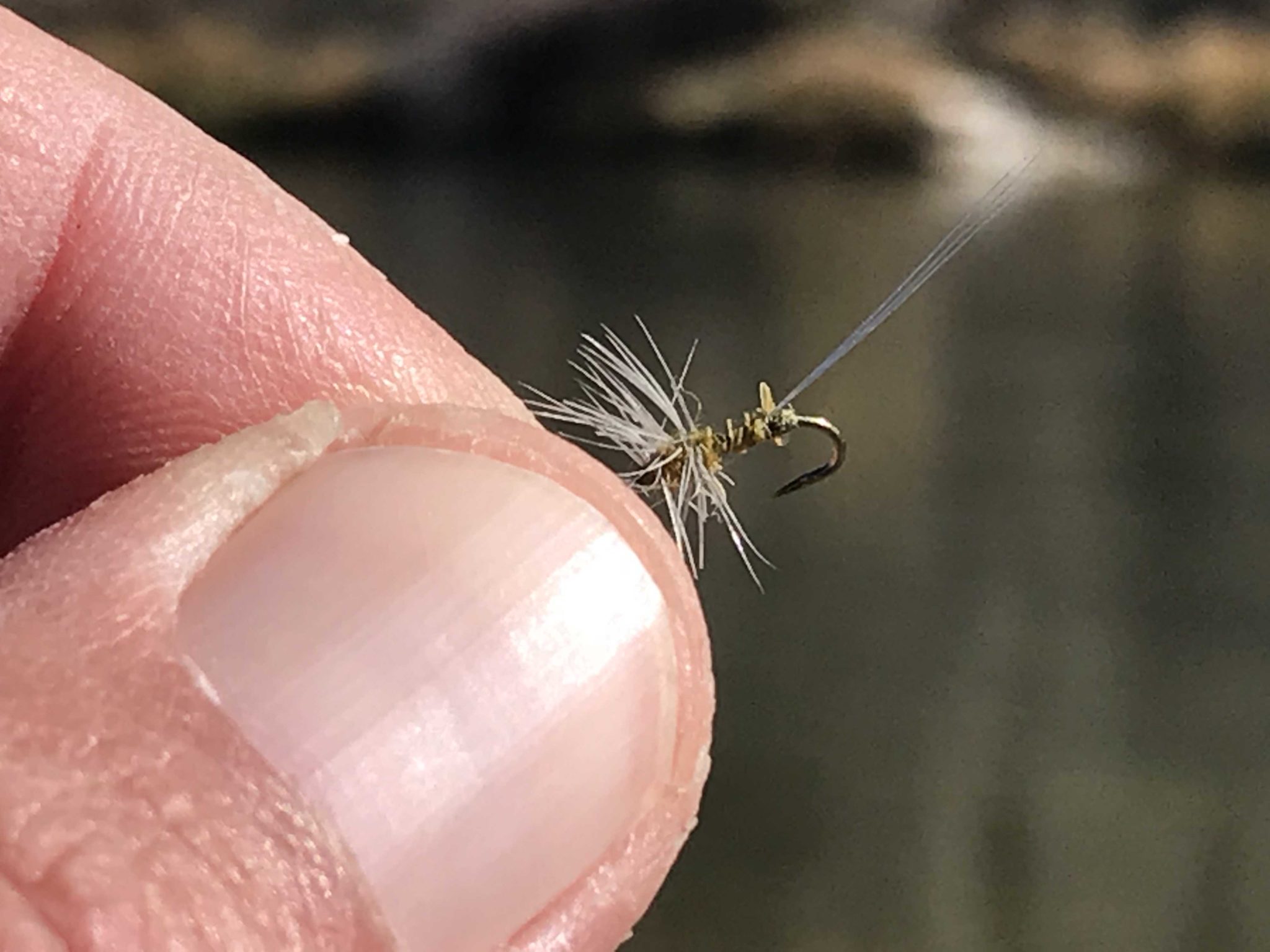 Hook: Standard Dry
Hook: Standard Dry
Thread: Uni Olive Dun 8/0
Tail: Split Microfibbets, Dun
Body: Olive turkey biot
Wing: Light Dun Turkey Flat, Upright
Hackle: Light Dun, palmered through thorax
Head: Olive Superfine Dubbing
Flies that didn’t work
- Griffiths Gnat, #20
- Olive RS2, #22
- Black Palomino Midge, #22
Day 3 – Crusher Hole (Bolack Day Use Area)
Since we did so well the day before, we decided to head back to the Crusher Hole, but park on the opposite side via the Cottonwood Campground road. It’s the same beat, but easier to access because most of this stretch follows a flat, rocky beach. My feet had been numb the previous two days from standing in the cold water for hours on end, so I was looking forward to being able to fish from shore.
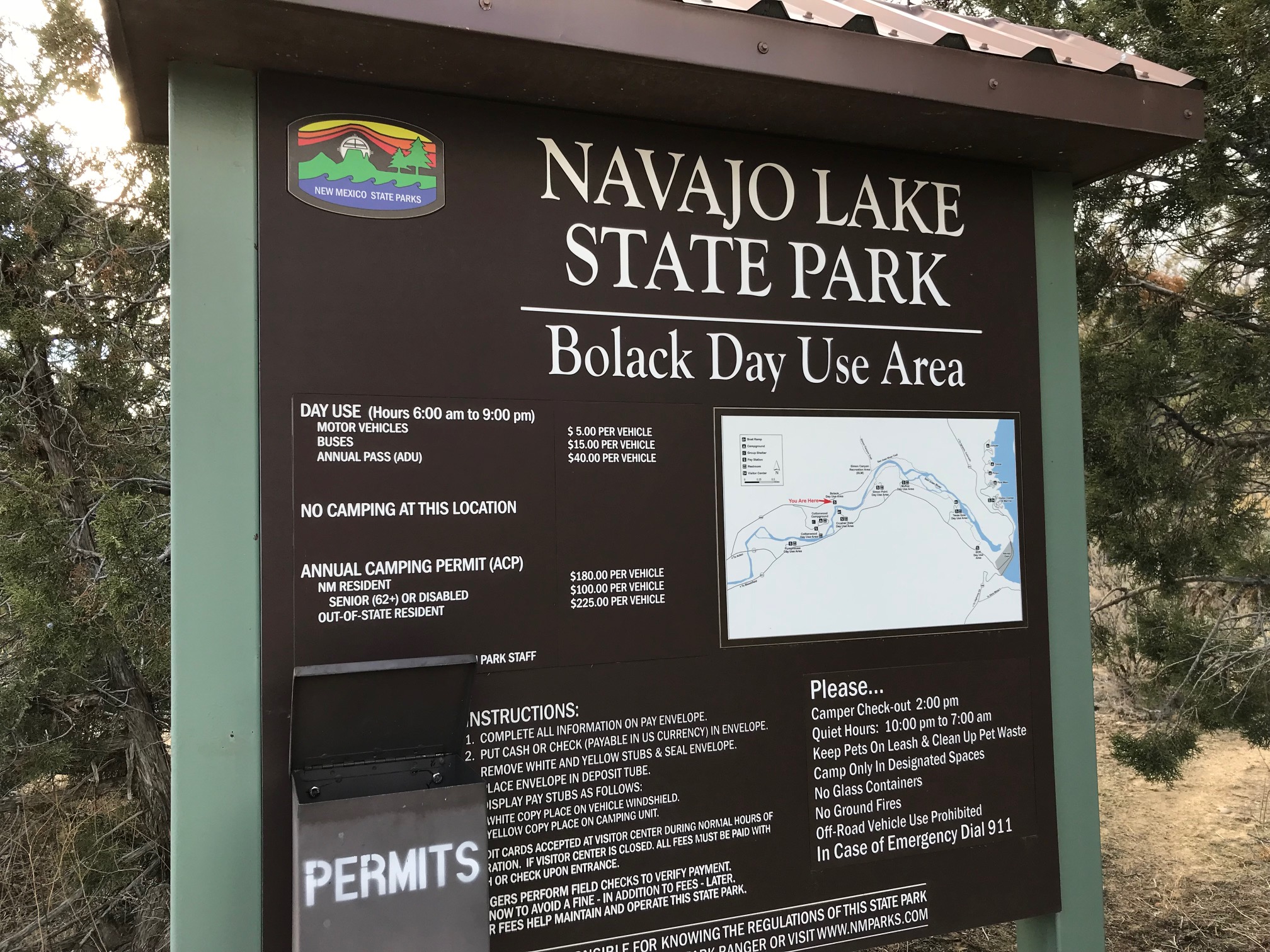
My Subaru on the drive up the road to Cottonwood Campground …

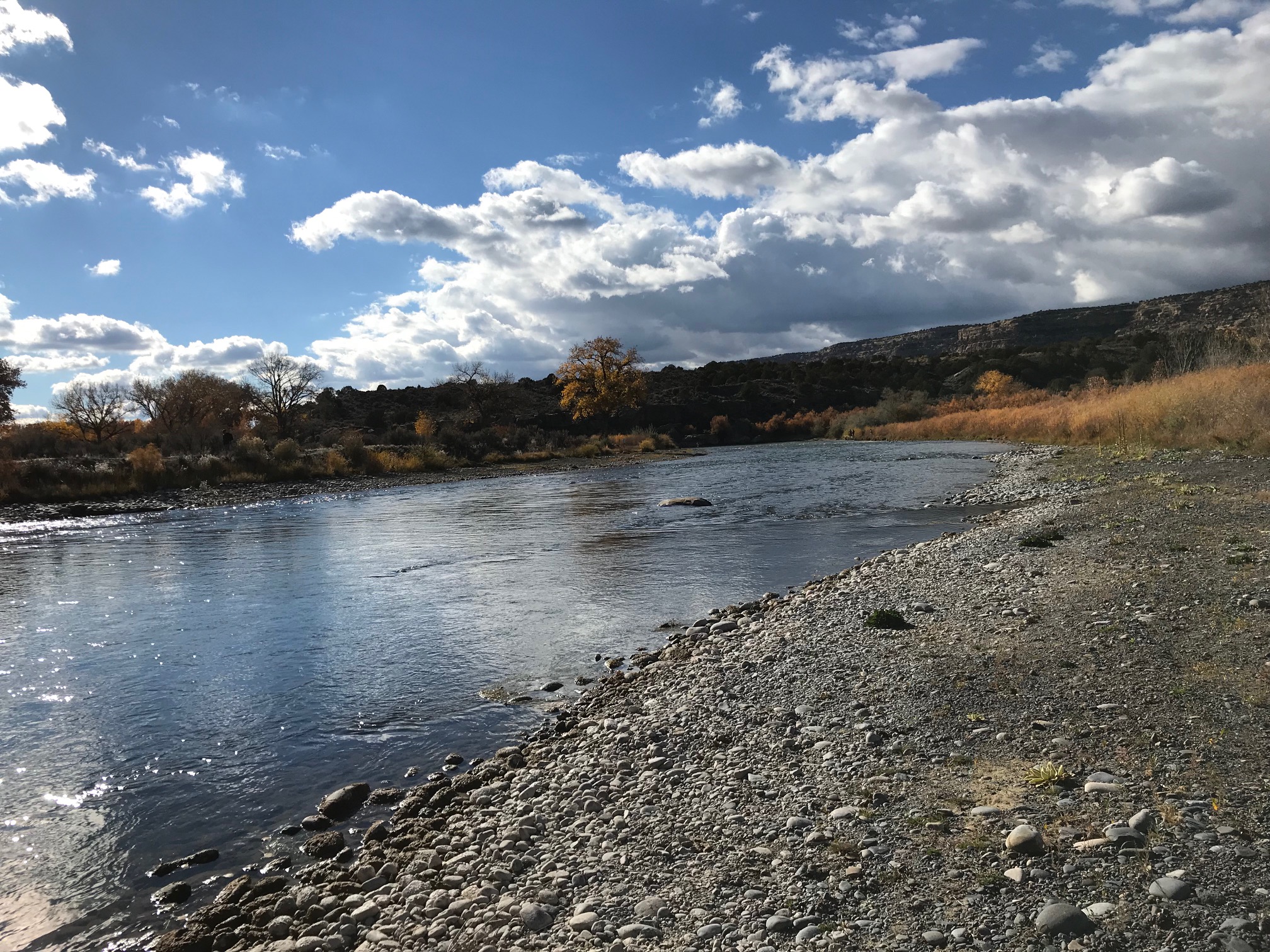
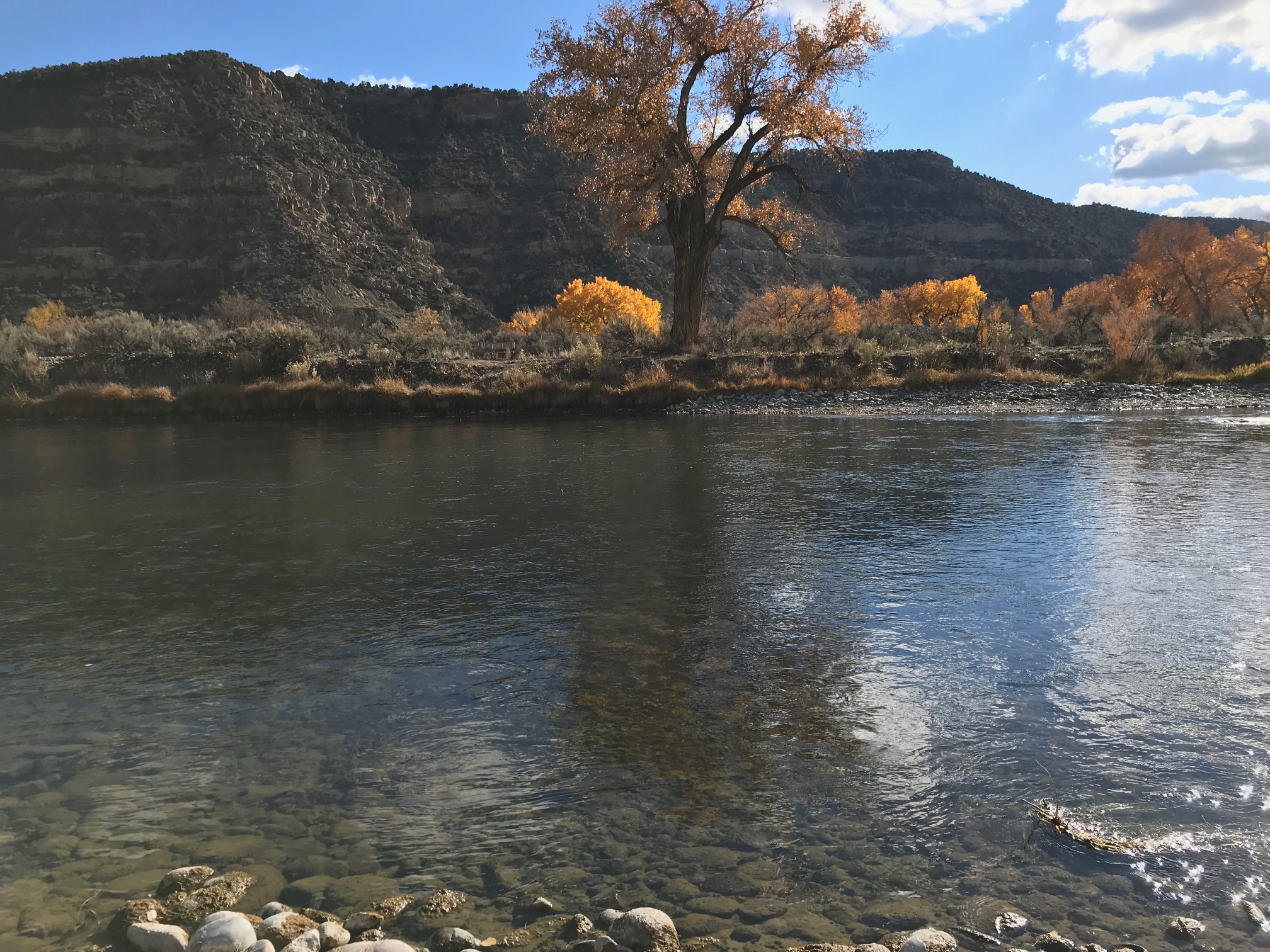
With the previous day’s success under my belt, I felt more educated, confident, and focused.

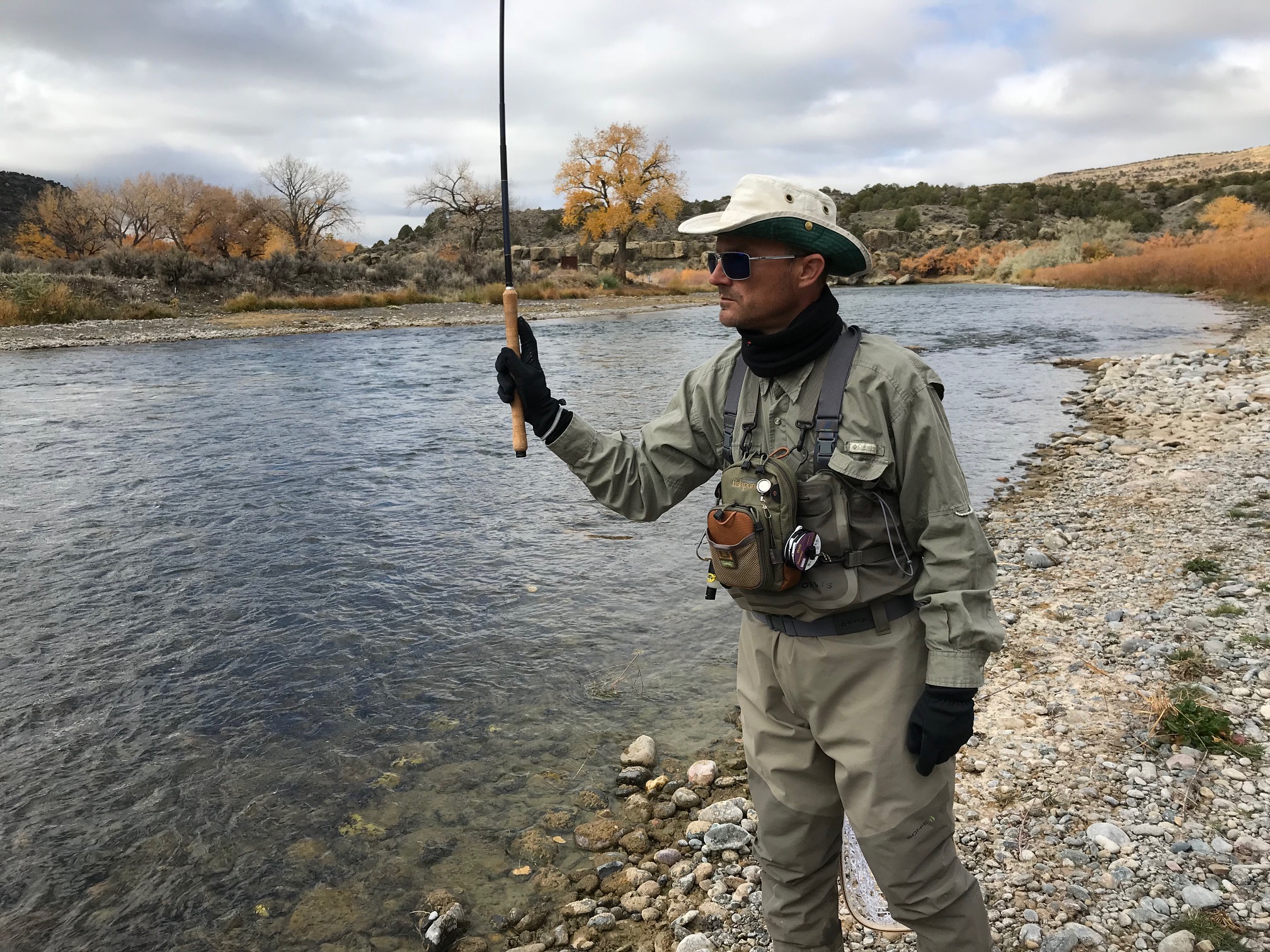
When we first arrived, there were no fish rising, so I figured I might as well make a last-ditch effort to try some tenkara flies subsurface. I had already caught plenty of fish, so why not? And lo and behold, my first seven fish were on sakasa kebari! (See which patterns below). To me, this was the pinnacle of the trip. I had not only successfully landed dozens of San Juan trout on tenkara tackle, but on tenkara flies as well! If I had showed the guys back at Abe’s the size 12s I was catching them on, they would never have believed me. After all, these fish laugh at #16s.
Later that afternoon, there was good cloud cover, a low ceiling and a smattering of rain–perfect olive conditions. And the hatch came as predicted so it was back to fishing BWOs on the surface for even more icing on the cake. All in all, it was nearly as good as day 2, with about 25 fish landed.
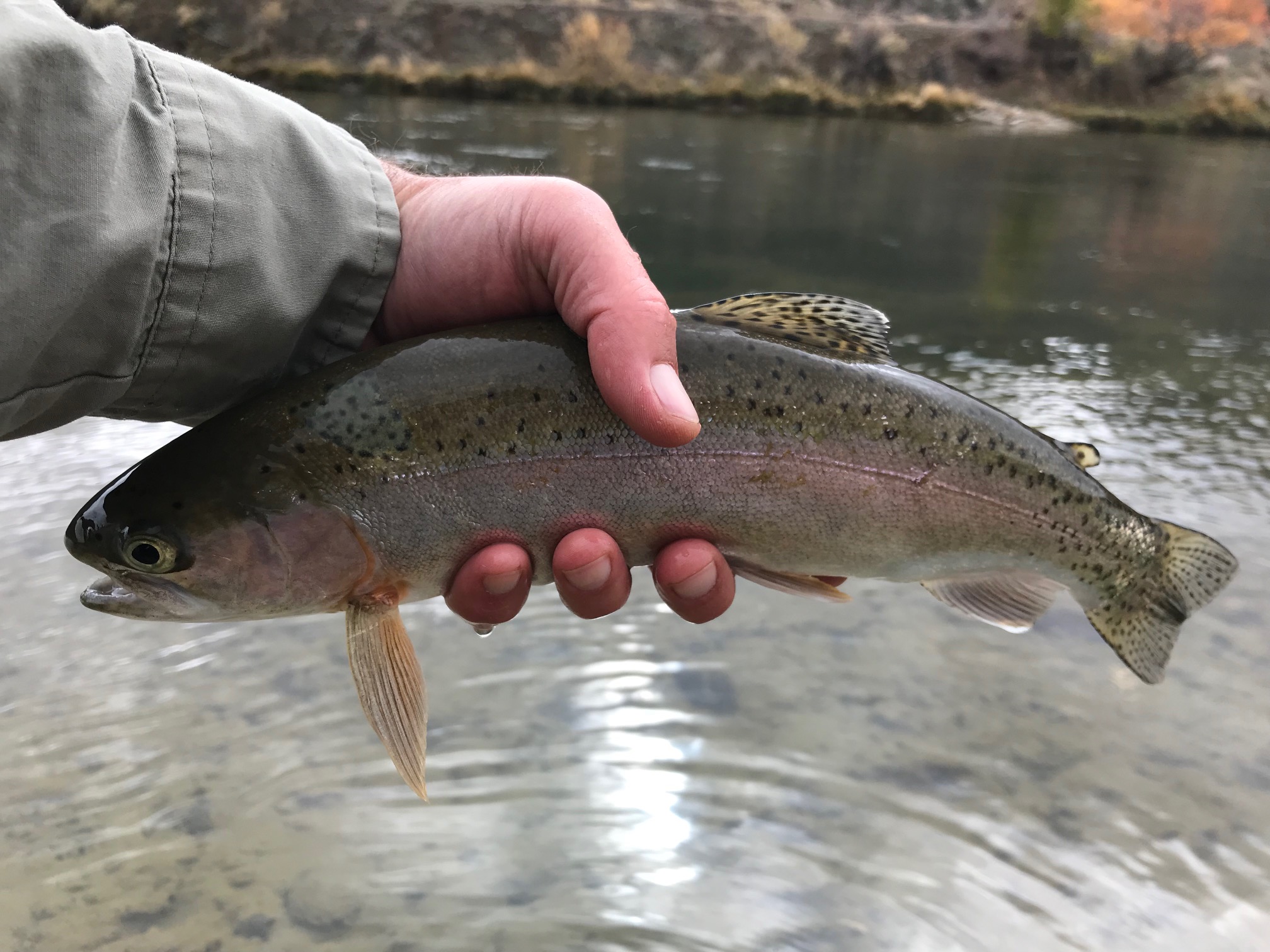

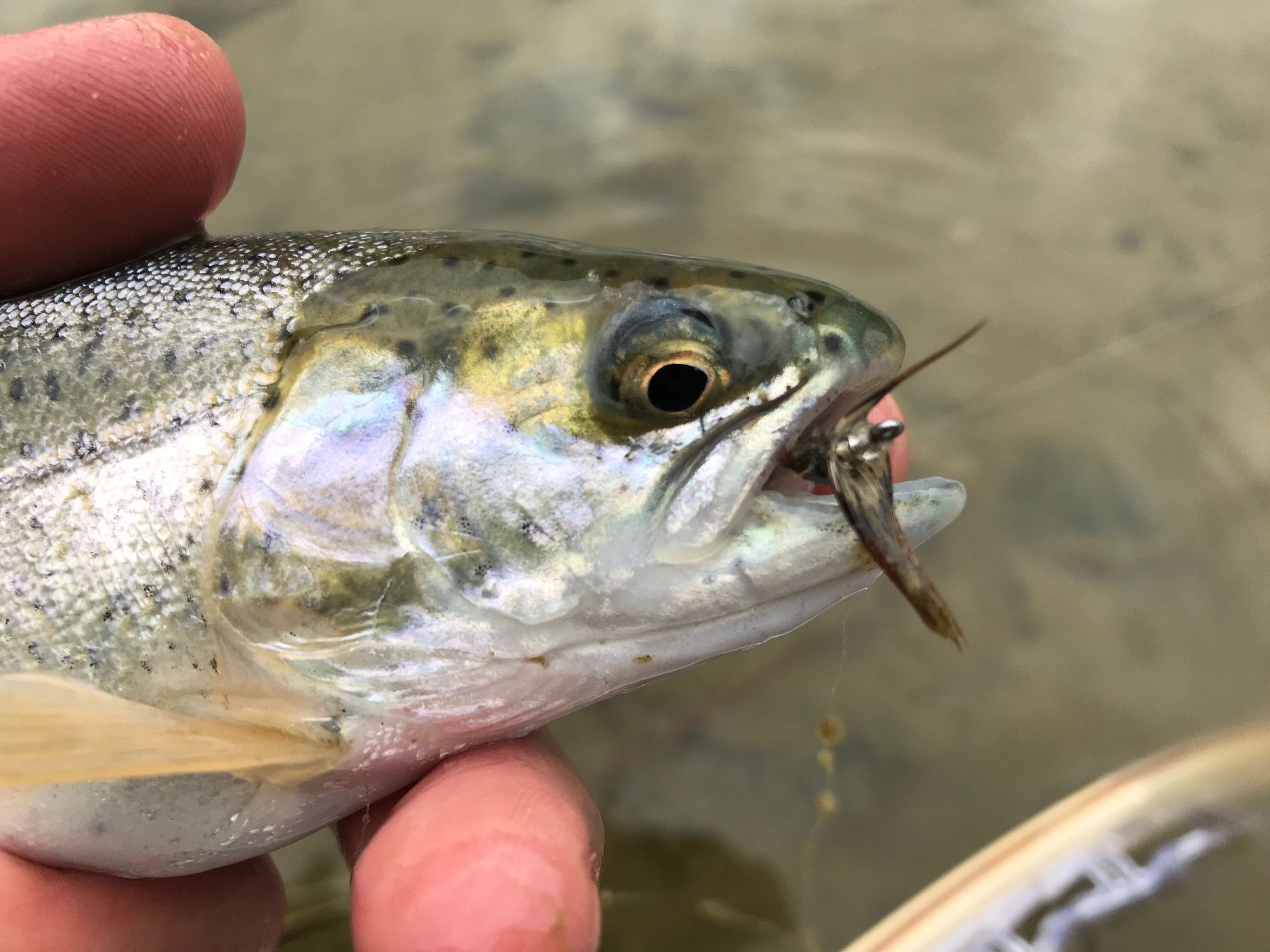
All the fish taken on the sakasa kebari, were taken with a sasoi (downstream twitch) presentation. I was unable to get any interest with an upstream or side-stream dead drift.


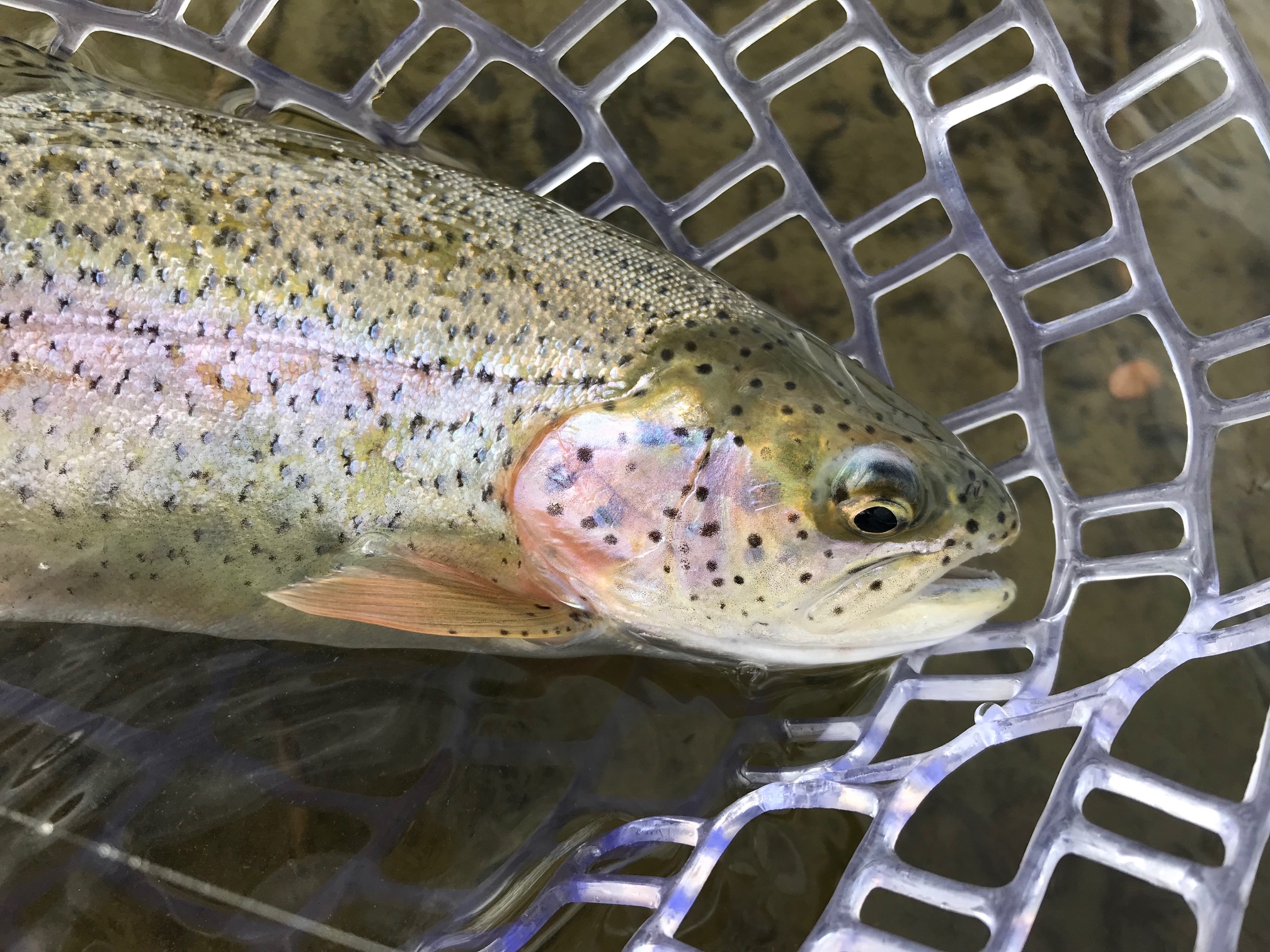
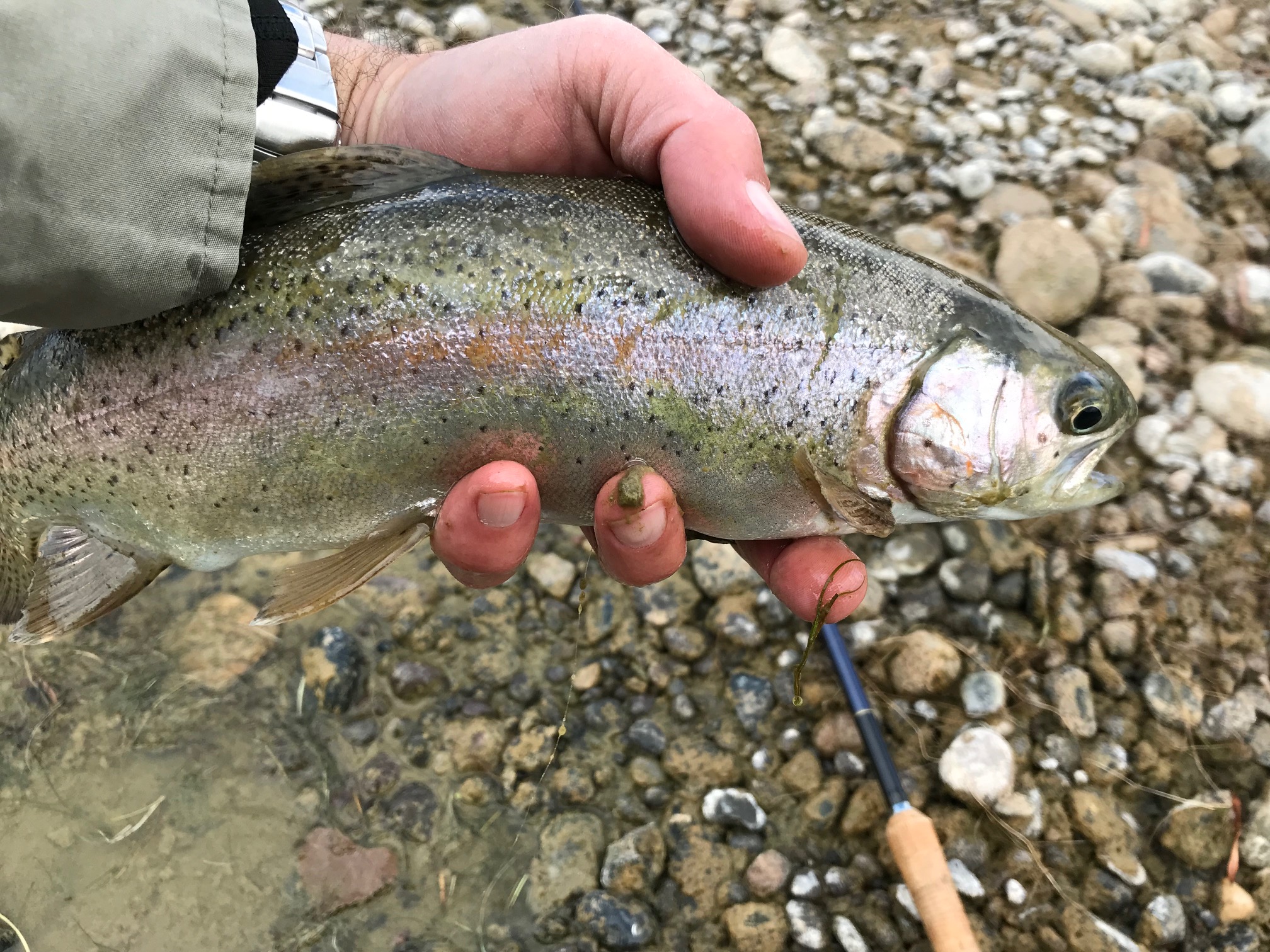


Someone must have caught a a fish so big that it snapped their big-game tamo!
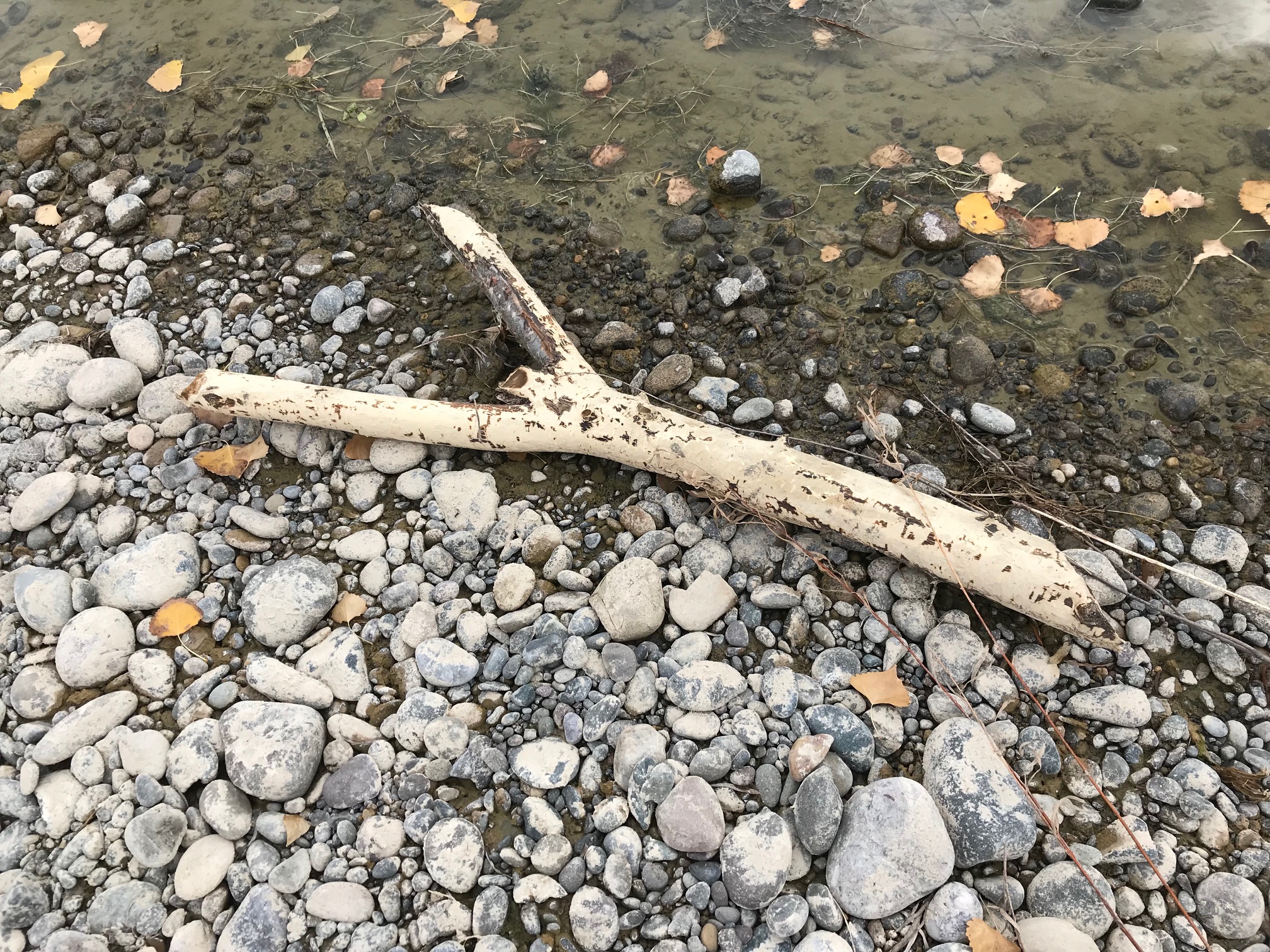
Flies that worked
> CDC Blue-Winged Olive Emerger, #22 (see above)
> Blue-Winged Olive Thorax Dun, #20 (see above)
> Glass Bead Takayama Sakasa Kebari, #12
 Hook: Firehole Sticks #315
Hook: Firehole Sticks #315
Head: Two small clear/pearl glass beads
Thread: Uni Red 6/0
Body: Thread
Thorax: Peacock Herl
Hackle: Church window pheasant
Learn more about this pattern here
> Black Kamikaze Kebari, #12
 Hook: TMC 2499SPBL
Hook: TMC 2499SPBL
Thread: Uni Black 8/0
Head: Thread
Rib: Small copper wire
Body: Thread
Hackle: Jungle cock spade (or partridge)
Learn more about this pattern here
Tenkara flies really do work on the San Juan!
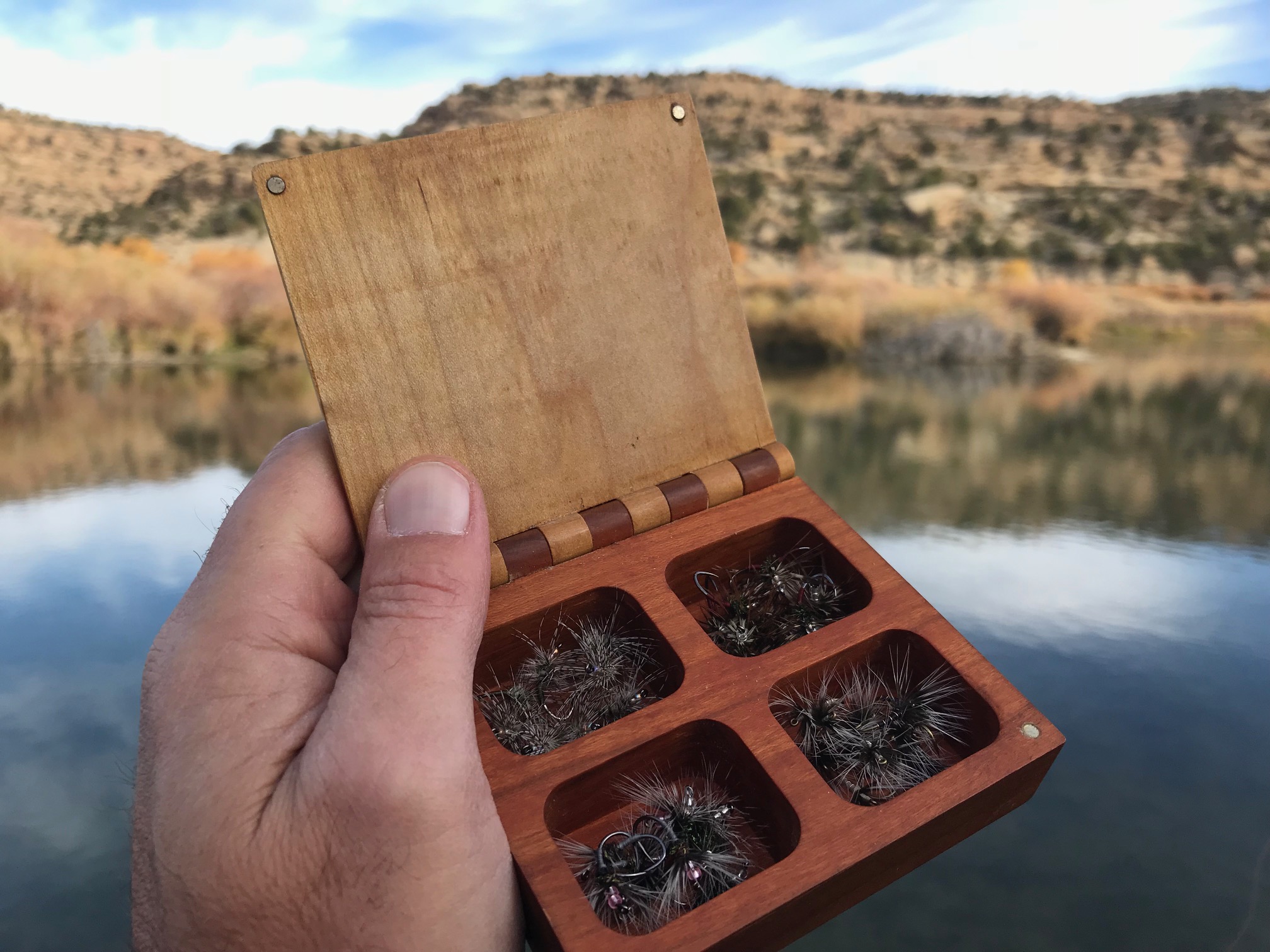
Some General Observations
Restrictions
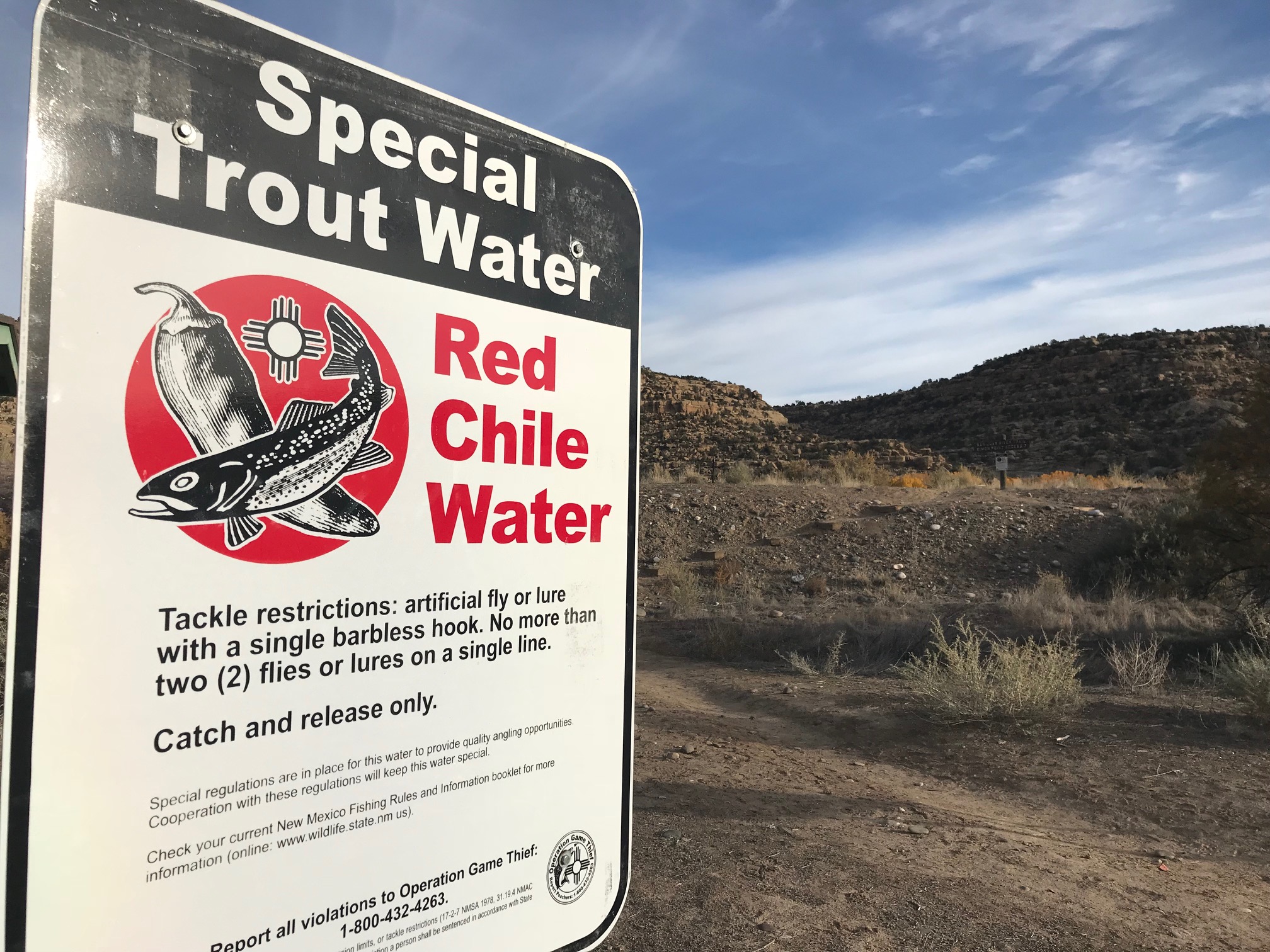
All of the water we fished throughout the trip is called “Red Chile Water”. The New Mexico Department of Game and Fish has this strange, yet somehow charming system to designate regulations across different watersheds:
Red Chile = Catch & Release, artificial fly or lure with single barbless hook
Green Chile = Two-fish limit, artificial fly or lure with single barbless hook
Xmas Chile = Two-fish limit with any legal tackle
I shudder to think what “any legal tackle” could mean, since the local shops proudly advertise that they sell snagging hooks for Kokanee in Navajo Lake.
Water Flows and Temperature

Since it’s a tailwater, the San Juan has a pretty consistent flow and temperature. The entire time we were there, the water temp. was 48° and the flow was 400 CFS. Of course, this can change if the Department of Fish & Game decides to release water from the dam, so before you go, check the current discharge rates here. But in general, if you’re wondering, “when is the best time of year to go?” The answer is pretty much any time!
Fish Behavior
I spent a lot of time observing rising fish and their patterns and one thing I noticed is that in the slower water, the fish do not hold in one lie and rise consistently in one lane. They move around and “cruise” similar to trout in lakes. It can be deceiving because if you can’t actually see the fish, but only its rise, you might cast ahead of where the rise occurred–but that fish is gone. It’s already moved laterally, upstream or downstream which can make it difficult to predict the best presentation. Of course if you can sight the fish, it’s much more intuitive.
Tackle
I had planned on strictly fishing tenkara the entire trip, but brought a couple of 5 weights as backups. I didn’t use them at all. In fact, with its longer length and lighter line, tenkara tackle proved to be far more effective at getting a good dead drift than western tackle would have. In terms of line, you might have noticed that I fished a 13′ line the whole time. The sheer size of the water tempted me to use a longer 18′ or 20′ line and that would seem logical, but, de facto, the fish are more afraid of your tippet than they are of you. These fish are used to graceless waders, splashing dogs, and clanky drift boats . You can wade right up to 17″ fish and they won’t shy away. So, it’s better to use a shorter line and wade in closer to get the best presentation than it is to fish a longer line. The notion of stealth wading does not exist here.
The tippet, on the other had, does matter. Just as they’re used to people, they’re used to being caught and are tippet wary. I highly recommend fluorocarbon in 5X for larger tenkara flies, and 6X and 7X for midges and Baetis. I used 6X most of the time in more turbulent or wind-broken water but there were times where I definitely needed 7X–especially on the flat, calm pools.
Parting Thoughts
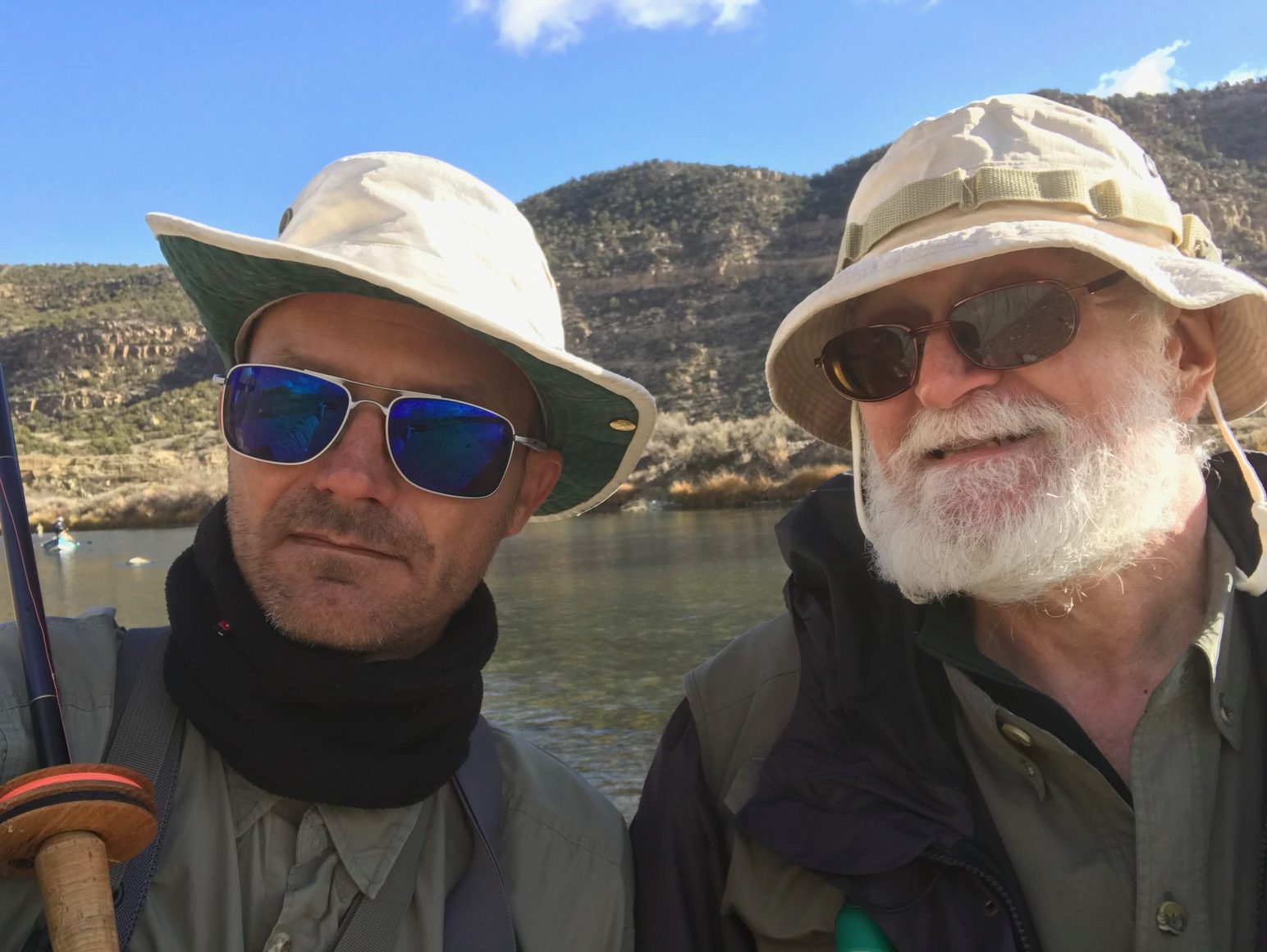 I may not have caught any of the notorious monsters that lurk in the San Juan. But I did catch a lot of fish–over 60 in three days (that’s probably more than I’ve caught in the last three months back home). But this trip wasn’t about numbers. It was about reuniting with an old friend, reminiscing about old memories, and making some new ones.
I may not have caught any of the notorious monsters that lurk in the San Juan. But I did catch a lot of fish–over 60 in three days (that’s probably more than I’ve caught in the last three months back home). But this trip wasn’t about numbers. It was about reuniting with an old friend, reminiscing about old memories, and making some new ones.
The San Juan is a magical place. It will challenge you as an angler, try your patience, but in the end, will reward you. Plus, it’s tenkara friendly (if you’re perseverant enough).
If you’re planning on heading to the San Juan and have any questions, feel free to contact me. I’m by no means an expert, but I’d be willing to help with any advice I can.
One last look before heading back to Colorado. Until next time …



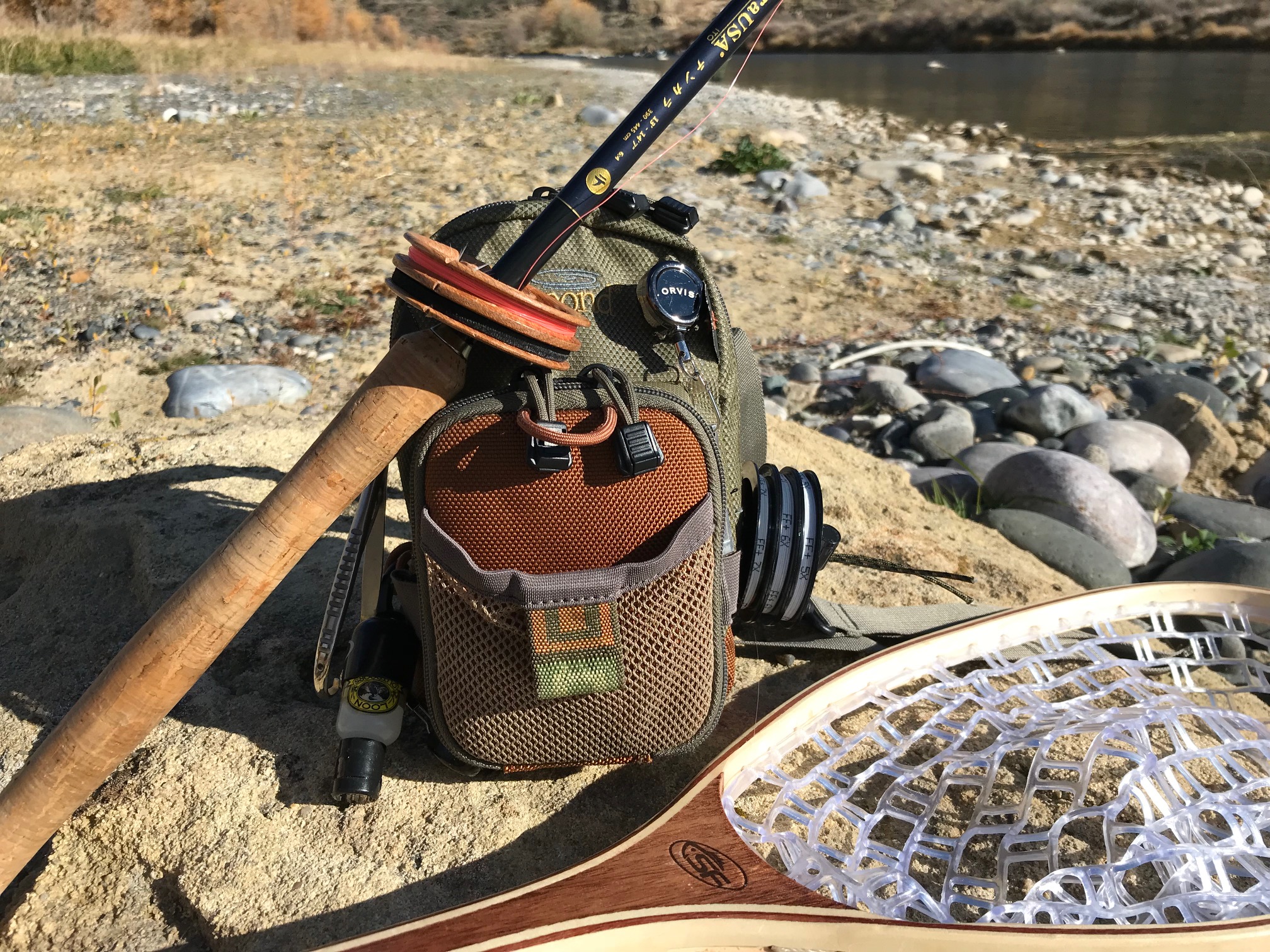
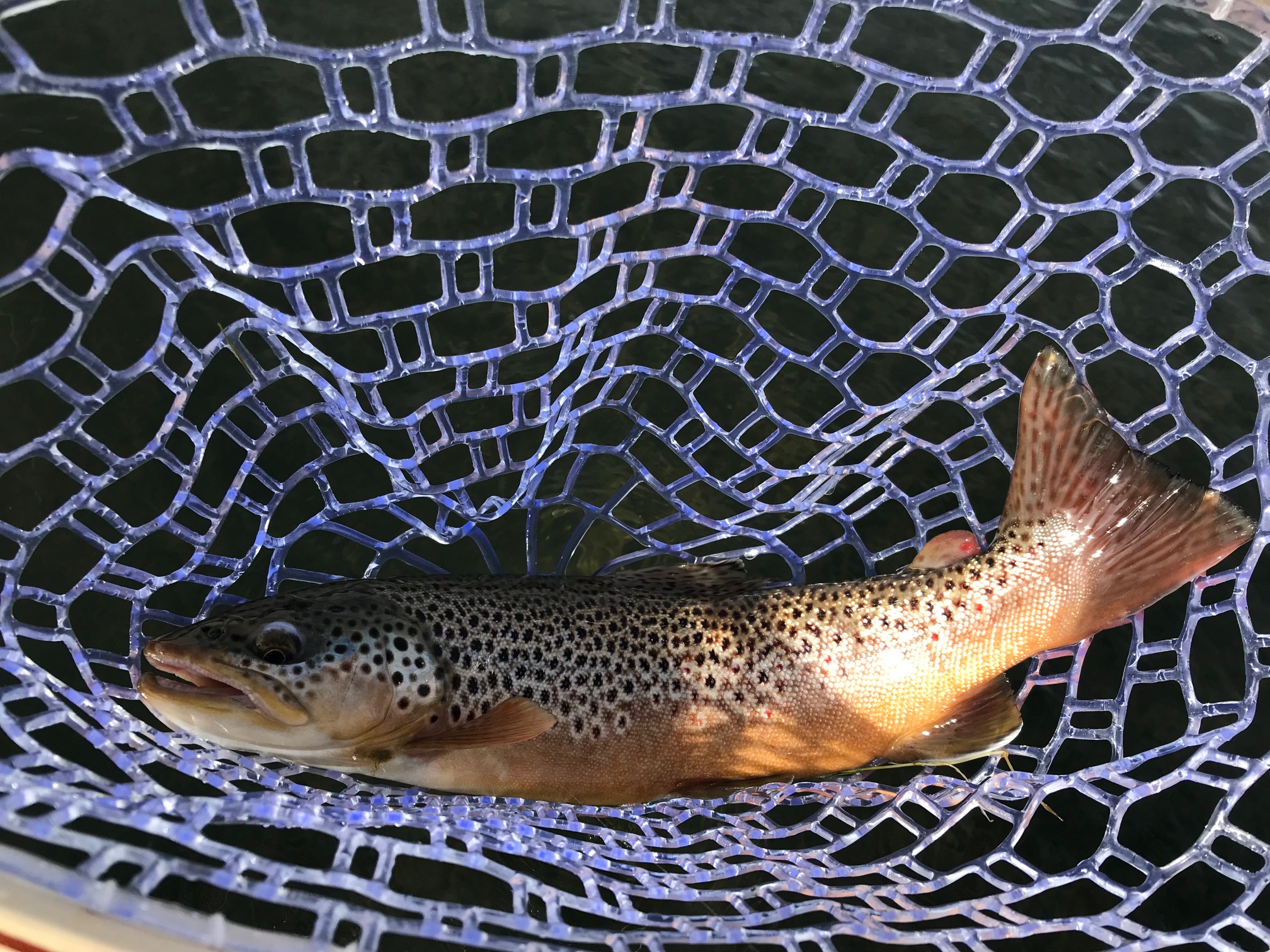
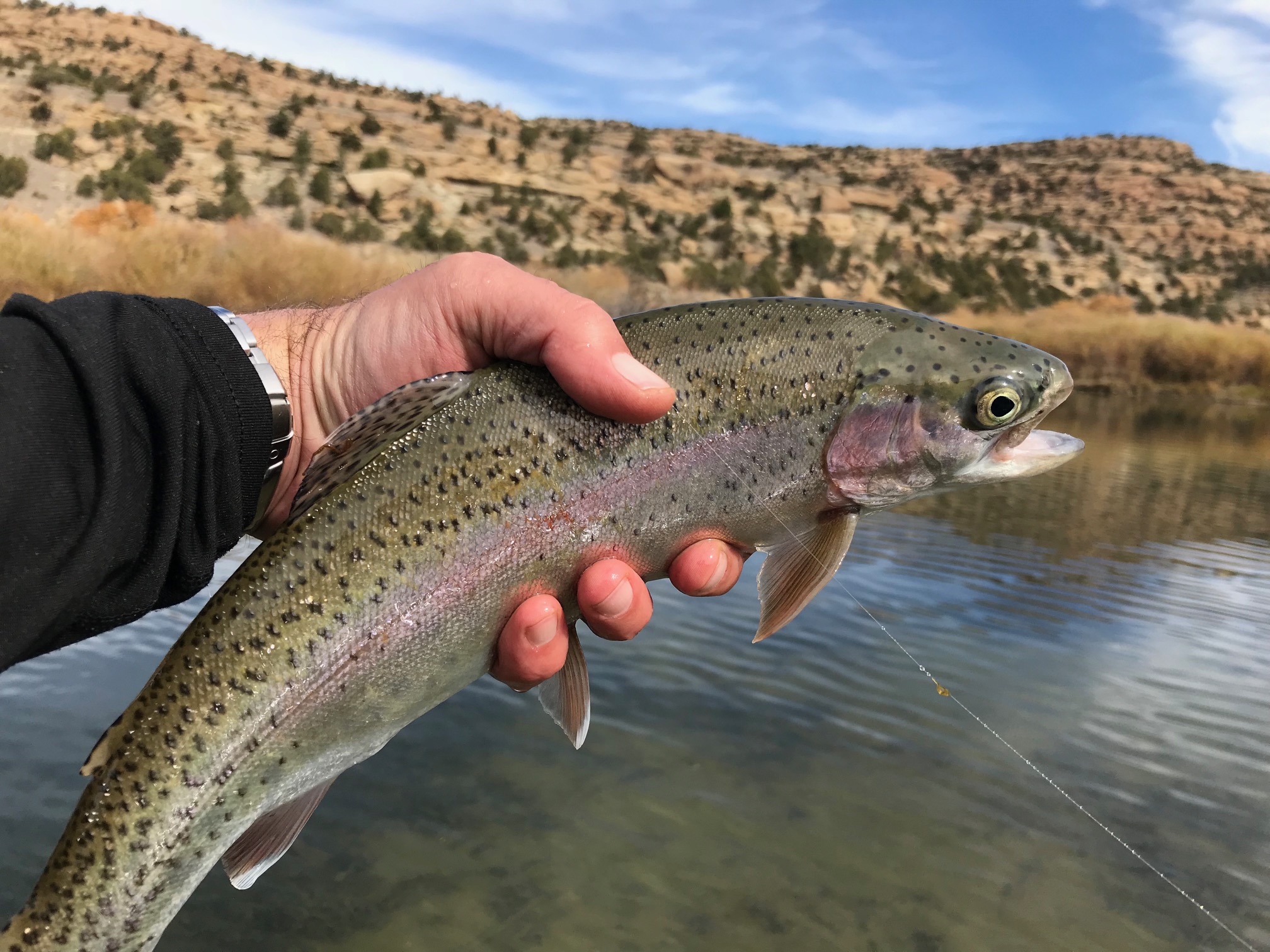


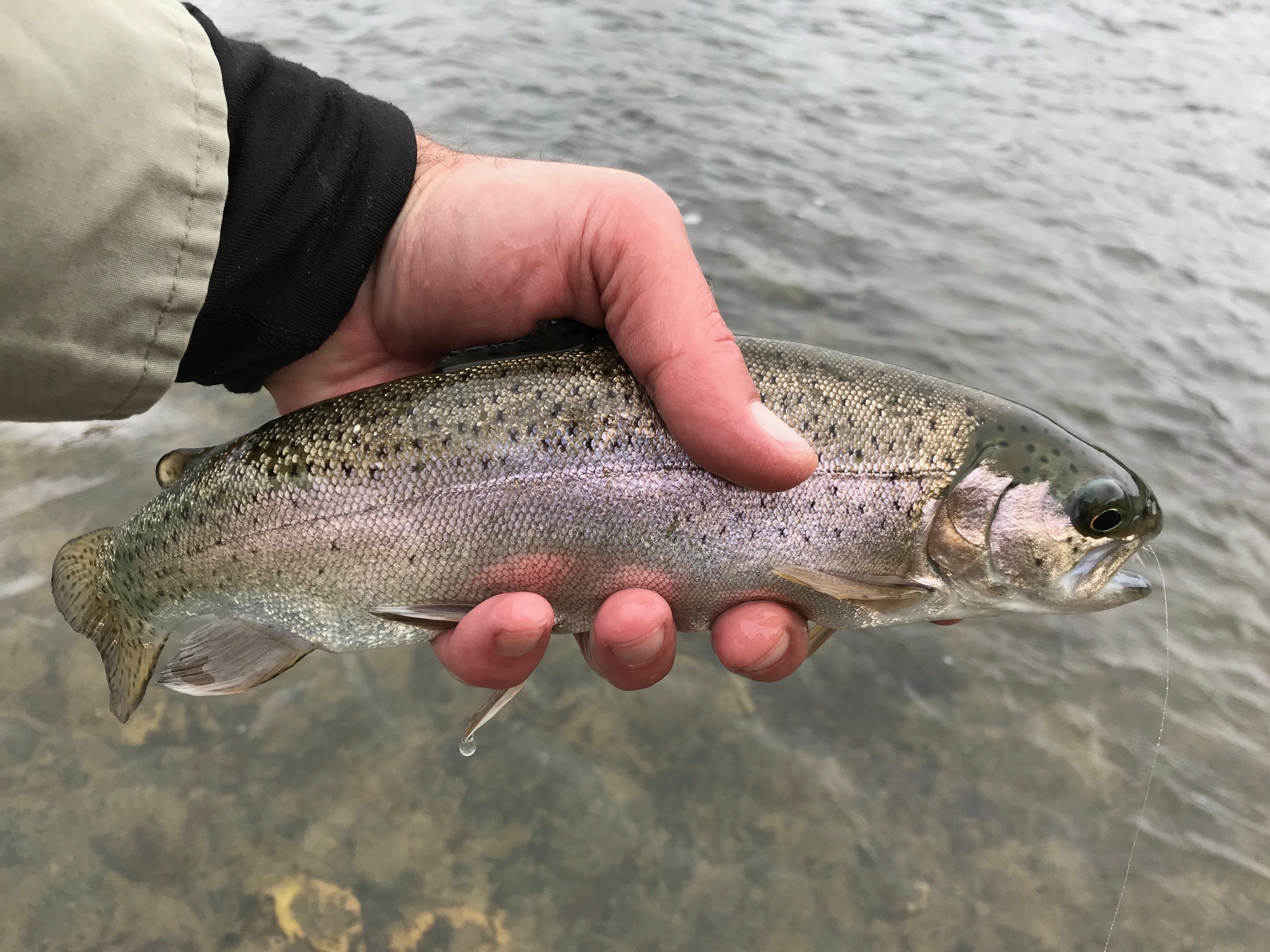
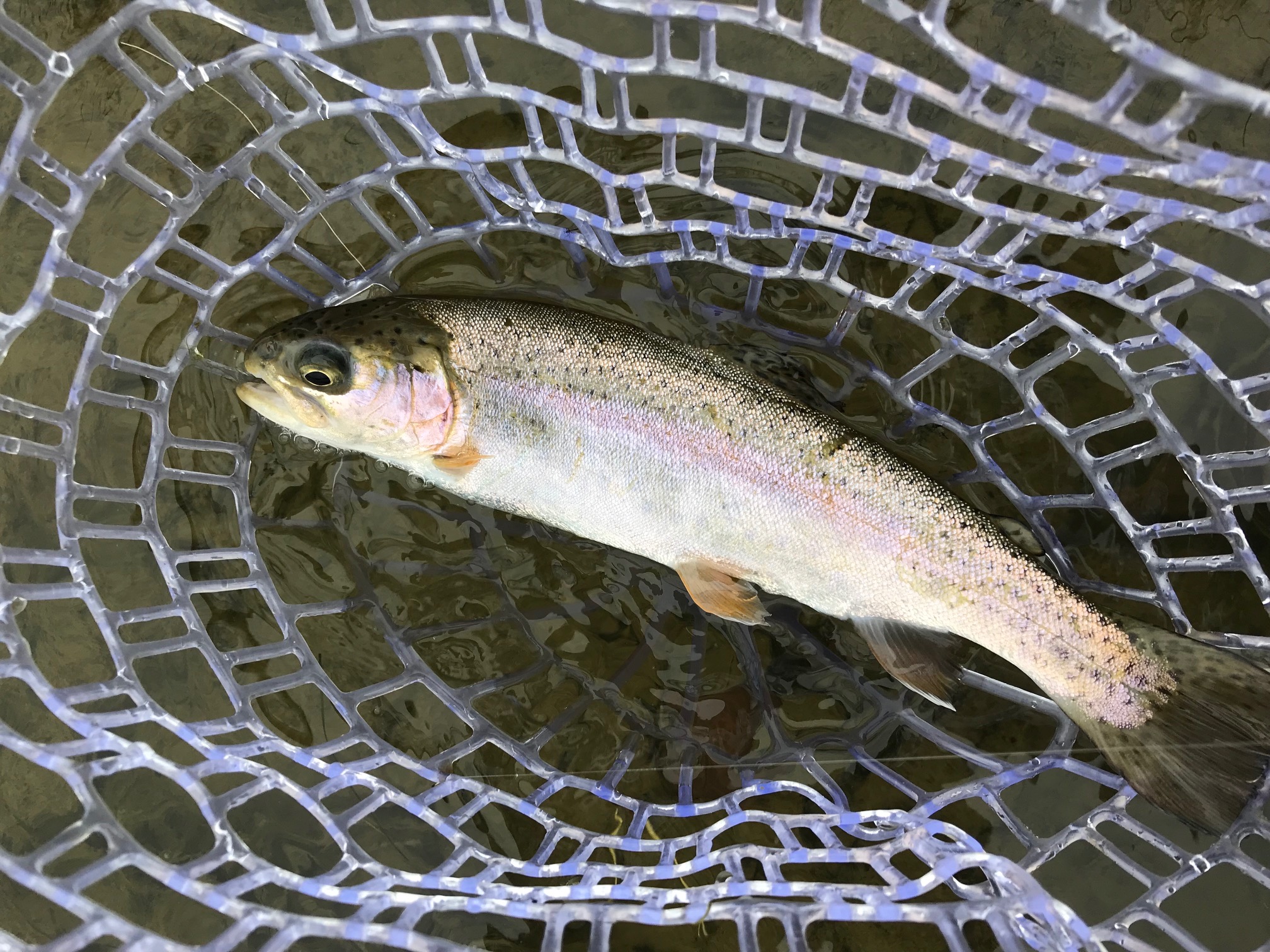










Jason, Can you fish there in Jan,Feb , March???
Hi Elliot, yes! By then, the only hatches will be midges (blue-winged olives will be finished) but nymphs, scuds, and sakasa kebari should also work. Dress warm! That water is cold and I’d recommend putting some chemical hand warmers in the feet of your waders. That saved the day for me the last two days.
Helluva good time – next year, the Pan (or the Green, or the Rio G…)
I had a good laugh at the list of “flies that didn’t work”
Randy
Really great post Jason. Appreciate the attention to detail greatly. Like how you listed both the flies that worked AND didn’t, nice touch! Looks like an amazing time and fishery – and tremendous you had such success with the tenkara rods (sorry about the Oni though)…
Thanks Mike. Luckily, the replacement tip arrived the day after I got home so it’s back in action!
When you write about a trip, I want to pack my gear and head out. Great writing and generous sharing.
Great information Jason. My family is planning on going to the San Juan next October. We fishing this year on the Cimarron with our tenkara rods and had a great time.
Loved the article and the finer details you included of your trip.
I tied a couple of sakasa kebaris using the jungle cock spade feathers over the past month after rewatching one of your online (Youtube) tying tutorials. Admittedly, it has become a favorite of mine.
Since, you used several western style flies in very tiny sizes it makes think about what smaller birds, like quail, may have suitable feathers for tying even smaller (size 20/22) sakasa kebari?
Hi Jeffrey, I’ve used starling and small grizzly hackle for some small sakasa kebari, but at that size, the sakasa style kind of loses it’s advantage, so to me, it’s better to just fish actual western midge and BWO patterns.
Looking at that last picture of you & Randy – Hunter S. Thompson lives! Fear and Loathing on the San Juan. Gonzo Tenkara.
Keep up the good work.
Great article, lots of good information.
Great article lots of good information
thanks for fly making ideas to use this winter
Jason, I really enjoyed your article and photos! Thanks for posting this…I will be going down there next year for sure!
Sounds like fun. Let’s see, coming out of California if I stop in…..
You can’t fish downstream can you? Isn’t that the San Juan Shuffle?
Hey Bill, I did fish downstream with the tenkara flies. Downstream twitch presentation.
Thanks you. Nice article.
I’m headed to Cottonwood Campground at the end of March ’19 and will be fishing Tenkara. I don’t have a lot of experience but look forward to fishing these waters and although in a different season, hope to apply some of you experience and some away smelling like fish 🙂
Thanks Jason! I hope to fish and film a video there, perhaps next winter season as an escape from Colorado. This article certainly leads me in the right direction as far as tippet and fly sizes. Seems like a long flexible rod would have the best chance at tiring any bigger fish you might hook with lighter tippet. I probably would have stubbornly fished 5x and hoped for the best if for not reading this.